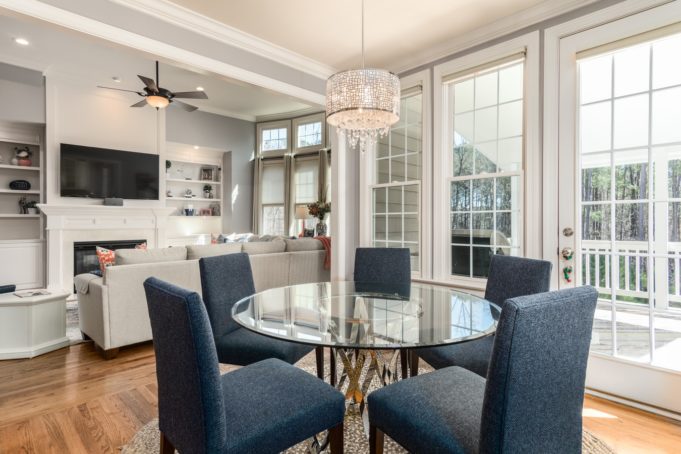Even if you only have a few rooms, getting the right lighting can help create numerous spaces where you can relax, be creative, entertain, cook, and more. Ensuring you have 2-3 types of lighting in your home can help meet all your needs such as lighting for specific tasks, ambient lighting, and accent lighting.
What is Task Lighting?
Task lighting consists of a brighter light, a smaller focal point of the room for things like reading, working on your laptop, cooking, etc. For a more pleasant effect, avoid harsh lights that can cast shadows. You might also want to use a single switch that is separate from the room’s overall lighting controls.
Fixtures for Task Lighting:
- Tape and extrusion
- Desk lamp
- Pendant lights
What is Ambient Indoor / Outdoor Lighting?
Ambient lighting, also known as general lighting is meant to light up an entire space uniformly and independent of other lighting sources. Indoor ambient lights are usually placed where they can bounce off the walls and light up as wide a space as possible.
Types of Fixtures For Ambient Indoor Lighting:
- LED downlights
- Chandelier
- Wall-mounted fixture
- Track light
Outdoor lighting is usually meant to improve visibility, light up exteriors of buildings and home, and increase security around the area. It can also be used to illuminate exterior entrances and stairs so that accidents don’t take place.
Types of Fixtures For Ambient Outdoor Lighting:
- Garage lighting
- Post lantern
- Spotlight
- Wall light
Accent Lighting
Accent lighting is more often used to highlight a specific architectural feature, plants, or trees in outdoor layout, a sculpture, painting, or some special collections of things you’d like to highlight. A simple rule of thumb says that the best accent lighting needs three times more light on the focal point than ambient lighting generally provides. This is what makes things stand out.
Types of Fixtures for Accent Lighting:
- Slimline bar and undercabinet
- Track light
- Directional recessed fixtures
Finally, when thinking about lighting for your home, it’s best to understand what the purpose of the room is before you start. This will not only help you to maximize your lighting plan and save energy but also ensure you create the exact vibe you want for your spaces.











